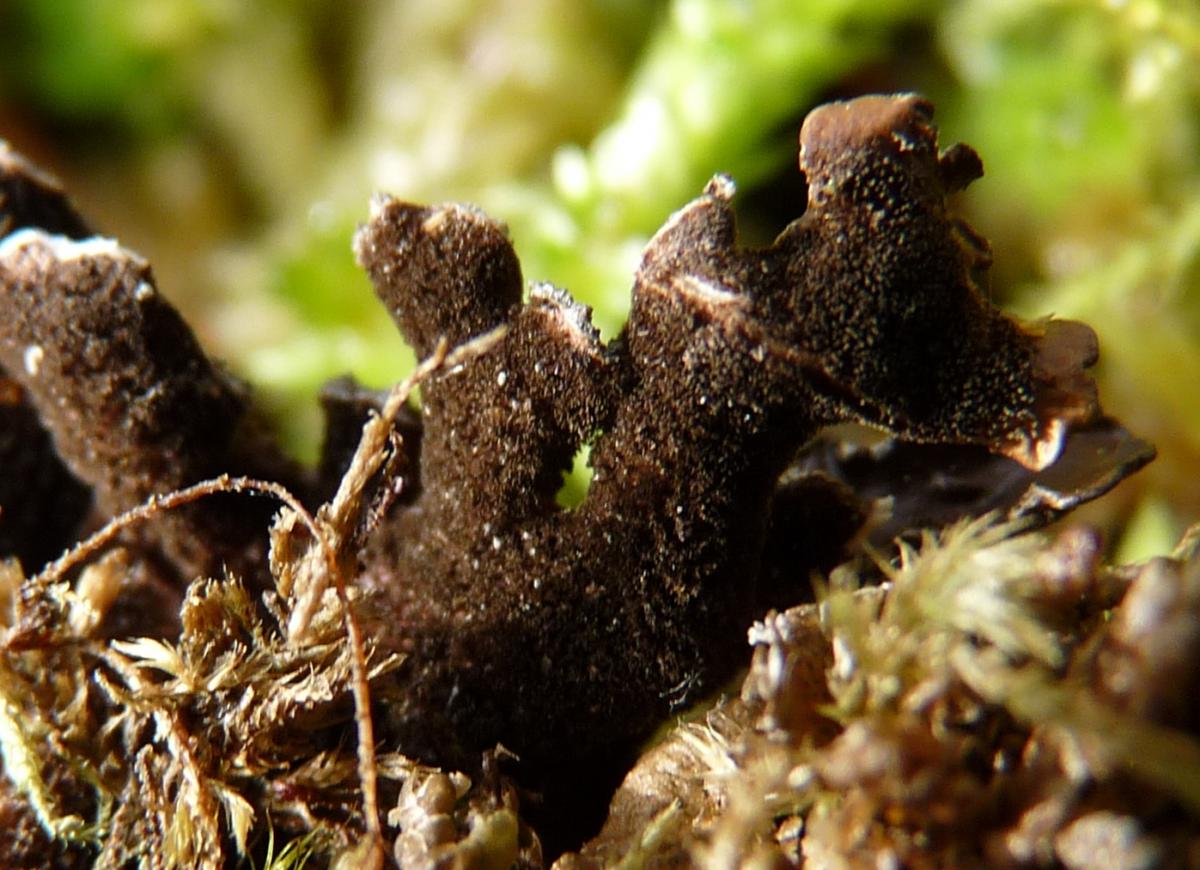Pseudocyphellaria norvegica
This species was described new to science in 1979 (see Coppins & James (1979). It is a substantial foliose lichen with, when moist, a brown thallus that becomes grey-brown on drying out. Its surface is smooth, though it may develop ridges. The purple grey coloured eruptions of soralia along the lobe margins and scattered in dots or somewhat more elongated squiggles over the surface of the thallus are a prominent feature. It might be mistaken for a Nephroma or a Peltigera. The underside gives it away in that the Pseudocyphellaria is covered in a dense, dark brown stubble of rhizines. A careful search amongst the rhizines will also reveal the presence of small sunken bald patches, the pseudocyphellae that give it its generic name and the English name of the Americans-the speckle bellies. Peltigera has large bushy, rather widely spaced rhizines and Nephroma a bare undersurface. In Sticta limbata the undersurface and rhizines are much paler in colour and the rhizines less well developed.
 |
 |
| P. norvegica - upper surface.(Photo: R.G. Woods) | P. norvegica - lower surface. (Photo: R.G. Woods) |
PLEASE NOTE. All Pseudocyphellarias appear to exceptionally rare in Wales and you must not just rip up bits to look at the underside!! In dry weather take a small sprayer and water with you to moisten the thallus before carefully turning it over in situ. An illuminated hand lens is almost a must.
There have been three Pseudocyphellaria species recorded from Wales. All have white medullas. P. norvegica differs in having a C+ red and KC+ orange medulla and soralia. Its lobes are somewhat more rounded and ridged than the superficially similar P. intricata and there are more soralia scattered over the thallus surface. P. intricata tends to have more elongated smooth lobes with the soralia, at least initially, confined to the lobe margins. P. lacerata has cylindrical to branched isidia at the lobe margins and occasionally spreading over the lobe surface. Unfortunately occasionallyP. lacerata soredia can grow in situe to develop a cortex and so resemble isidia. If in doubt seek expert help.
Near Ceunant Mawr, Gwynant Valley NE of Beddgelert, Caernarvonshire in the Snowdonia National Park SH6553. Last seen 2009 RGWoods.
- Read more about Pseudocyphellaria norvegica
- Log in to post comments
